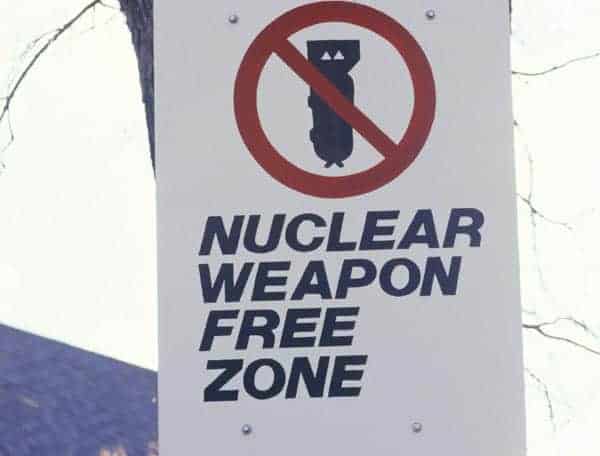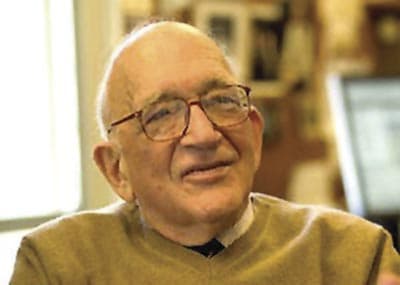As US President Barack Obama takes office, his leadership will be needed to reduce the dangers of the world’s nuclear weapons and to stop nuclear materials from falling into rogue hands, argues Sidney Drell

President Obama has said that he intends to “make the goal of eliminating all nuclear weapons a central element in [US] nuclear policy”. He faces enormous challenges in converting this aspiration into a practical reality, both at home and abroad. One reason is that the world has become accustomed to thinking of nuclear weapons the way Winston Churchill described them in 1955: “It may be that we shall by a process of sublime irony have reached a stage in this story where safety will be the sturdy child of terror, and survival the twin brother of annihilation.” Over half a century later, the world has changed and the “sublime irony” is that terror and annihilation still loom over humanity, while safety and survival are still in doubt.
During the Cold War, the US and the former Soviet Union relied on nuclear deterrence to navigate successfully through those perilous years. And, against what seemed to be insurmountable odds, not one of the many thousands of existing nuclear weapons was detonated in military combat, although there were numerous opportunities to do so.
But it would be dangerously wrong to draw comfort from that achievement. Relying on nuclear weapons for deterrence is becoming increasingly hazardous and decreasingly effective in a world in which nuclear know-how, materials and weapons are spreading ever further and faster. Today, the world is teetering on the edge of a new and more perilous nuclear era, facing a growing danger that nuclear weapons — the most devastating instrument of annihilation ever invented — may fall into the hands of “rogue states” or terrorist organizations that do not shrink from mass murder on an unprecedented scale.
With the spread of advanced technology, and a renewed international interest in nuclear technology for civil power generation, there will be more opportunities for the theft or diversion of bomb fuel unless the full nuclear-fuel cycle is under tight, verifiable control, from enrichment to reprocessing. The threat of such proliferation is becoming ever more likely, particularly with more countries now aspiring to enter the nuclear power club.
To prevent such a catastrophe will take strong leadership and a sense of urgency that was lacking when two bold leaders, US President Ronald Reagan and Soviet leader Mikhail Gorbachev, attempted to escape the trap of nuclear deterrence based on mutual assured destruction at their remarkable summit meeting in Reykjavik in 1986. Although they failed to close the deal then — recall that in 1986 the Berlin Wall still stood and we had yet to emerge from the Cold War — Gorbachev and Reagan did start down the path of reducing the sizes of their bloated nuclear arsenals. However, without a vision of a world free of nuclear weapons as a guide beam, the nations of the world have not pursued measures that could reduce the nuclear dangers we face with the intensity and the boldness that the times require.
The challenges ahead
Rekindling this vision of Reykjavik will be President Obama’s main challenge, but realizing that goal will be very difficult. The importance of meeting this challenge is discussed in the new book Reykjavik Revisited: Steps Towards a World Free of Nuclear Weapons published by Hoover Institution Press, which I co-edited. Achieving the goals will require nothing less than a new deal between the states that have nuclear weapons and those that, for now, have volunteered to forego them. Progress will require political co-operation on a global scale between nations with very different economic and strategic aspirations, as well as forms of governance.
Currently, inspections under the Nuclear Non-Proliferation Treaty (NPT) to limit the spread of nuclear weapons are restricted to declared facilities only, and existing institutions like the International Atomic Energy Agency need more political clout and resources, including rights to the on-site inspection of suspect activities such as those currently being pursued under the Additional Protocols to the NPT. It will also be necessary to convince sceptics that it is possible to meet the very difficult challenge of verifying, with an effectiveness consistent with US security, that no nuclear weapons or bomb material have been secretly stored away in violation of a treaty commitment to eliminating them.
Winning over sceptical audiences in the US and elsewhere will take time, but the Obama administration can begin by proposing a series of practical steps to convince sceptics and allies alike that the vision of a world without nuclear weapons is not a flight of fancy but a practical goal. The following are candidates for the first two steps to do this.
First the US should engage the full cooperation of Russia, which, together with the US, possesses more than 90% of the world’s nuclear warheads. The administration must resume and reinvigorate serious negotiations to review and, if appropriate, extend key provisions of the Strategic Arms Reduction Treaty of 1991. Most pressing is the need to negotiate an extension of the essential monitoring and verification provisions of this treaty, which is scheduled to expire on 5 December 2009. The two parties should agree to reduce the limits on the total number of warheads to less than 1700–2200, as agreed in the 2002 Moscow Treaty on Strategic Offensive Reductions
Second, the new administration should adopt a process for bringing the Comprehensive Test Ban Treaty (CTBT) into effect. Nine of the 44 members of the Nuclear Suppliers Group, including the US and China, have not ratified the CTBT, so it is currently not in force. The new administration should initiate a timely, bipartisan, congressional review of the value of the CTBT to US security. The International Monitoring System (IMS), which comprises more than 320 seismic, radio-nuclei, optical and acoustic monitoring stations around the world for identifying and locating treaty violations, has been greatly strengthened since the US Senate questioned its adequacy when refusing to ratify the CTBT in 1999.
Since then, the IMS has been strengthened by additional stations so that it is now approximately 90% complete. The IMS impressively displayed its sensitivity and effectiveness by rapidly locating, identifying and determining the very low yield of a test explosion by North Korea in October 2006. The US has also made considerable technical progress over the past decade in maintaining high confidence in the reliability, safety and effectiveness of the nation’s nuclear arsenal under a test ban. It can be demonstrated that the CTBT not only meets US national-security requirements but enhances security worldwide by constraining further developments and deployments of these weapons with the potential of such devastating destructiveness. Other nations have made it clear that they are looking to the US for leadership to bring the treaty into force.
Vision for the future
It will be a difficult challenge to turn the goal of a world without nuclear weapons into a practical enterprise. But it has also become clear that a global effort to reduce nuclear danger and prevent proliferation of nuclear weapons will require both nuclear- and non-nuclear- weapon states to embrace the vision of Reykjavik as an essential part of the process. Many of the non-nuclear nations have made it clear that they are willing and eager to enter into such co-operative efforts with the US and other nuclear weapons states, but only if they see the world moving away from the current two-tier system of a small number of nuclear nations and many non-nuclear nations towards a level playing field with a common vision of a world free of nuclear weapons.
The necessity of embracing the vision of Reykjavik was emphasized in two letters in the Wall Street Journal by George Shultz, Henry Kissinger, William Perry and Sam Nunn (4 January 2007 and 15 January 2008). In endorsing the vision of a world free of nuclear weapons, and describing the essential steps toward achieving it, they wrote in the first letter that “Without the bold vision, the actions will not be perceived as fair or urgent. Without the actions, the vision will not be perceived as realistic or possible.” With these two steps outlined above, President Obama has a historic opportunity to start down a practical path towards achieving his stated goal of “eliminating all nuclear weapons”.




